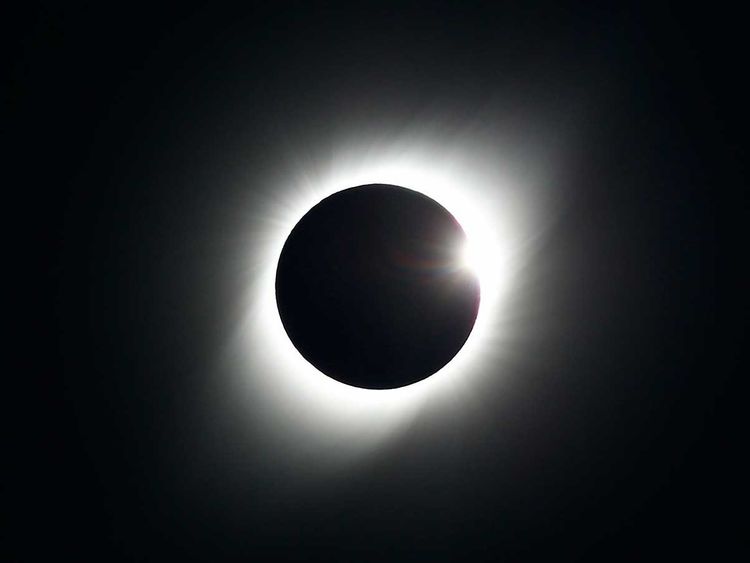文章管理 查看文章


Highlights
- The eclipse will start at 9:36 p.m. Eastern time.
- It will first be visible in the Indian Ocean and then move across to the Pacific Ocean, providing the best views for those in Western Australia, East Timor and eastern Indonesian islands.
- The moon will completely cover the sun for over one minute in Timor at 12:16 a.m. Eastern time.
- The hybrid eclipse will end at 2:59 a.m. Eastern time on April 20.
You may have heard of a total solar eclipse or even an annular solar eclipse. On Thursday, a rare hybrid solar eclipse is taking place - shifting between a total and annular eclipse depending on an observer's location on the ground.
Hybrid eclipses are rare among eclipses and occur only a few times a century, according to EarthSky. Out of 224 solar eclipses in the 21st century, seven will be hybrid. After today's eclipse, the next hybrid eclipse will be in 2031.
What is a hybrid eclipse?
Hybrid eclipses are a combination of a total and annular eclipse.
A total solar eclipse occurs when the moon passes between our planet and the sun, and the moon fully obscures the sun. An annular solar eclipse occurs when the moon passes between our planet and the sun, but the moon is at its furthest point from Earth. Because the moon is further away, it appears smaller than the sun and is unable to cover the star completely, leaving a ring of light from the sun.
During a hybrid eclipse, the Earth's curvature results in a different view across the globe, as the eclipse shifts between a total eclipse and an annular eclipse, according to NASA.
How it is different from a total eclipse?
A total eclipse occurs when the moon completely obscures the sun, whereas an annular eclipse occurs when the moon obscures the sun but appears smaller, leaving the outline of a solar ring and the rare hybrid eclipse takes place when both occur at the same time.
What time does it start?
In Western Australia the eclipse will be visible from 10:29 pm to 10:35 pm EDT on April 19 (2:29 to 2:35 GMT, April 20), in East Timor from 11:19 pm to 11:22 pm EDT on April 19 (3:19 to 3:22 GMT, April 20) and in Indonesia from 11:23 pm to 11:58 pm EDT on April 19 (3:23 to 3:58 GMT, April 20).
The eclipse will start from 9:36 p.m. Eastern time on April 19 and end at 2:59 a.m. Eastern time on April 20, according to In the Sky.
When the eclipse is happeningLocation: When the eclipse is happening
The first location to see the partial eclipse begin: 1:34am UTCThe first location to see the full eclipse begin: 2:37am UTCMaximum eclipse: 4:16am UTCLast location to see the full eclipse end: 5:56am UTCLast location to see the partial eclipse end: 6:59amUTC
Where can you view the eclipse?
The moon's shadow will move across Western Australia, East Timor and Indonesia, changing from a ring-shaped annular eclipse to a total eclipse and then back again. More countries will experience it as a partial eclipse with the moon obscuring just part of the sun, including Papua New Guinea, the French Southern Territories and the Marshall Islands, according to Space.com. The hybrid eclipse won't be visible in the UAE, but there are various free live streams online.
When is the next celestial event?
The next Eclipse (Partial) will be visible on August 2, 2027 and the next annular solar eclipse will occur in 2031. There are a total of seven hybrid solar eclipses in the 21st Century, with only four more after this year:
April 8, 2005
November 3, 2013
April 20, 2023
November 14, 2031
November 25, 2049
May 20, 2050
December 6, 2067
More From Oceania
 Special Report
Special Report
Power of a volcanic eruption: bigger than nuke blast

Biggest cyclone in decade slams Australia resources hub

Cyclone Ilsa hits Australia, sets new wind speed record

Evacuations underway as cyclone Ilsa nears Australia